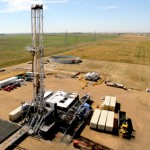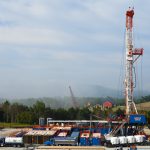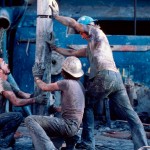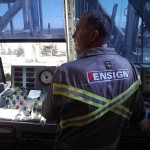Massachusetts request for proposals РHydro-Qu̩bec energy selection confirmed
Massachusetts request for proposals РHydro-Qu̩bec energy selection confirmed
Massachusetts request for proposals РHydro-Qu̩bec energy selection confirmed

Permian and Montney will receive 70% of all 2018 CapEx Encana (ticker: ECA) announced fourth quarter results and reserves today, showing a net loss of $229 million, or ($0.24) per share. Despite this quarter’s loss, the company earned a net $827 million over the full year. Both of these results compare favorably to the company’s 2016 results, when Encana reported

Reserves up 59% on Rice acquisition EQT (ticker: EQT) released year end results and reserves today, showing fourth quarter earnings of $1.28 billion, or $5.83 per share. The vast majority of these earnings, $1.2 billion, are due to benefits from the new tax legislation, as deferred tax liabilities are assessed at lower rates. However, EQT’s adjusted net income is still
Statement By CUB Executive Director David Kolata Alerting Ameren Illinois Customers To Proposed Gas Rate Hike

Alaska activity up 80% Drilling activity in the U.S. was flat this week, holding steady at the highest rig count in three years according to Baker Hughes. The total number of rigs operating in the country was unchanged at 975, though specific subsets saw significant changes. One land and inland waters rig shut down, while two offshore rigs became active.

Pacesetter handles directional drilling with Pin Down PowerDrive rotary steerable system Ensign Energy Services Inc. successfully drilled Canada’s longest land-based well, to-date, with a measured depth of 7,770 meters, or 25,500 feet. The well was drilled, in partnership with Shell Canada, in Fox Creek, Alberta, by an Ensign ADR 1500S super spec rig. Despite the well’s record depth, the time from spud to rig-release was
Bayshore Petroleum Corp. Announces Corporate Changes

Behind the booming growth in shale production is a conflict felt by every E&P company; extracting more oil and gas from each well is no longer enough as the market demands that production gains be tied to a lower cost per barrel. Industry wide, trend behavior has driven proppant volumes, smaller proppant mesh sizes, larger volumes of pumped fluids, and
Hannon Armstrong Sustainable Infrastructure Capital, Inc. Announces Fourth Quarter and Full Year 2017 Earnings Release Date and Conference Call
Sanchez Midstream Partners Announces Fourth Quarter 2017 Earnings Conference Call
Kayne Anderson MLP Investment Company Enters Into $150 Million Revolving Credit Facility
CONSOL Coal Resources LP Announces Filing of its Annual Report for 2017
Sign up to receive daily news and stock prices from Oil & Gas 360® directly in your email inbox.
Market Data ©2020–2024 QuoteMedia. Data delayed 15 minutes unless otherwise indicated (view delay times for all exchanges). RT=Real-Time, EOD=End of Day, PD=Previous Day. Market Data powered by QuoteMedia. Terms of Use.